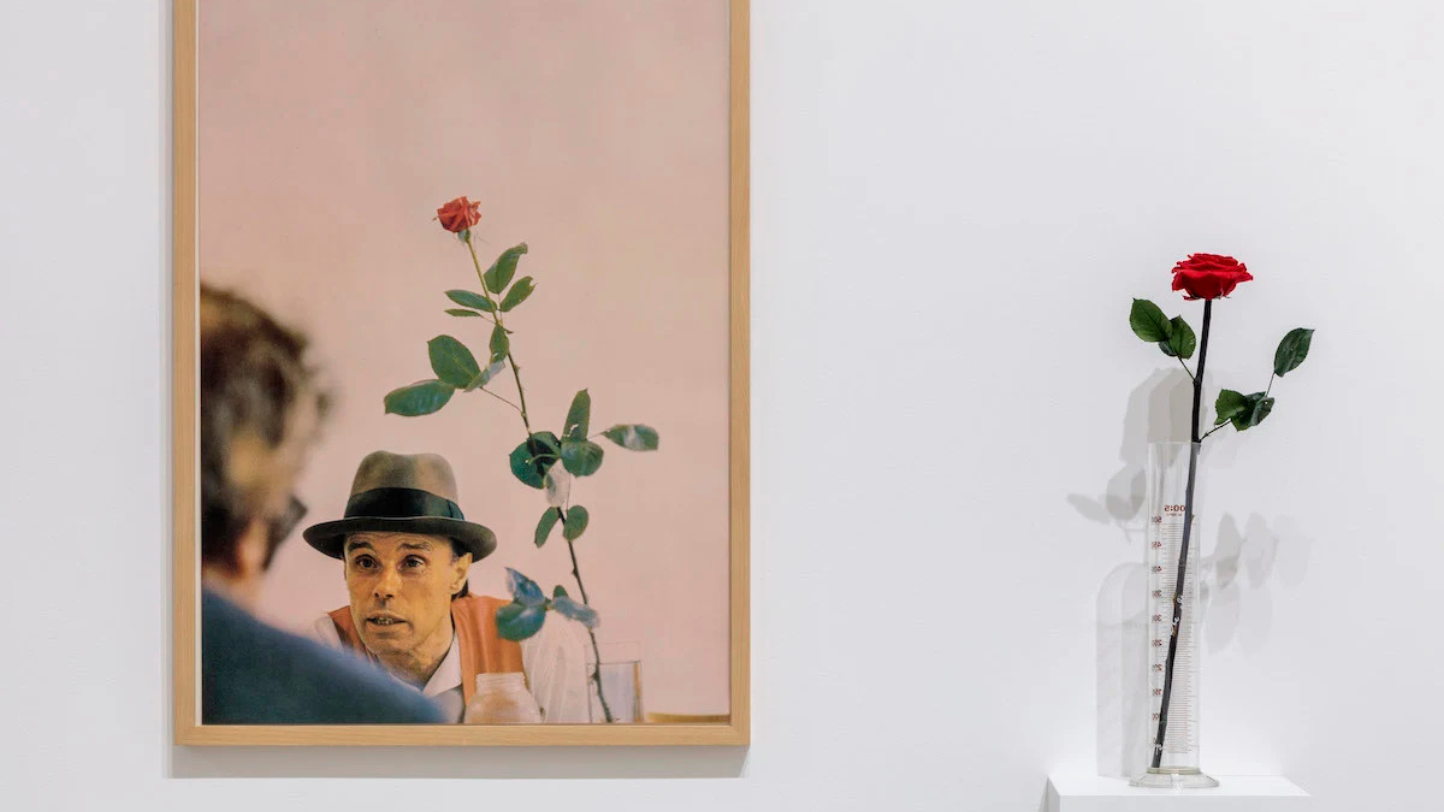
"If you have all my multiples," Joseph Beuys once said, "then you have me completely." The multifaceted German sculptor was referring to the limited-edition objects that contained the intellectual and emotional charge of his artistic project. These objects, which ranged from erasers to copper-plated beeswax blocks, were small in size and produced in large quantities. Therefore, Beuys believed they could widely disseminate his radical ideas about art as a transformative force in society, even without his direct presence.
Of the approximately 600 multiples he produced, approximately 400 are included in the Broad's new exhibition, "Joseph Beuys: In Defense of Nature," opening November 16. The show brings together found objects, sculptures, paintings, oil sketches, photographs, posters, films, and materials associated with his political actions, such as pamphlets and office tools—a vast body of work that Beuys referred to as "the whole of himself."
"For him, all manner of things mattered," explains Andrea Gyorody, a specialist in Beuys's work, who organized the exhibition in partnership with Sarah Loyer, curator and exhibition manager at the Broad. "He was dedicated to giving value to simple materials, ensuring their preservation as art objects."
Despite the diversity of materials, all the multiples reflect a common concern: the restoration of individual well-being and the transformation of social reality. Beuys believed that art was "the only genuinely human means of revolutionary change... completing the transformation of a sick world into a healthy one." These ideas were manifested in his multiples as well as in his large-scale sculptures, performances, and political interventions.
One of his best-known works, Capri-Batterie (1985), features a yellow lightbulb plugged into a socket inserted into a fresh lemon. The piece requires frequent replacements, as the lemon degrades over time. This continuous process promotes a form of social participation, something Beuys valued, and symbolizes regeneration, a concept the artist deeply embraced. Furthermore, it combines the artificial and the organic, suggesting a reconciliation between humanity and nature.
“Beuys understood objects as holding a kind of stored meaning, an eternal potential that could be resurrected or recognized as a stimulus for action,” Gyorody explained. “He hoped they would function as reminders of his political actions in a future when those actions would no longer be discussed, calling them 'memory supports.'”

Although this exhibition does not include the monumental work 7000 Eichen (7000 Oaks) (1982), it remains an essential reference. This project by Beuys involved planting oak trees in Kassel, Germany, accompanied by basalt stelae. Today, these trees provide shade, fresh air, and a renewing experience of connecting with nature.
Inspired by this legacy, the “Social Forest: Tovaangar Oaks” project marks the first initiative of its kind on the American West Coast, with the planting of trees in Elysian Park in Los Angeles.
In conjunction with the exhibition, the Broad is collaborating with the community organization North East Trees, Tongva archaeologist (Gabrielino) Desireé Reneé Martinez, and artist Lazaro Arvizu. Jr. to reimagine Beuys’s “social sculpture” in a contemporary context, in Tovaangar, the traditional territory of the Tongva, which includes present-day Los Angeles County.
The project includes the planting of 100 coastal live oaks on Elysian Park's Chávez Ridge and five more at Kuruvungna Springs, a sacred site for the Tongva people. It also includes a series of lectures, performances, and workshops focused on sharing Indigenous knowledge.

“Social Forest” aims not only at ecological reparation but also at collectively confronting the colonial history that has impacted Indigenous populations and the environment. Martinez describes the project as an opportunity to apply what Tongva educator Craig Torres calls the Three Rs: recognizing Indigenous history, respecting all life forms, and taking responsibility for protecting nature. Aaron Thomas, director of urban forestry at North East Trees, highlighted the project’s measurable environmental benefits, from carbon capture to rainwater retention. He further explained that the choice to use sandstone instead of basalt reflects a commitment to local ecology, as sandstone will, over time, enrich the soil where the oak trees will grow.
Beuys believed that "everything we do is sacred" and that every action, no matter how simple, has the power to shape the world. Martinez reinforces: "If everyone plants a flower for a butterfly, what might happen? The revolution can begin with small actions. Everything is interconnected—you'll see how quickly it spreads, from person to person, from tree to tree."
